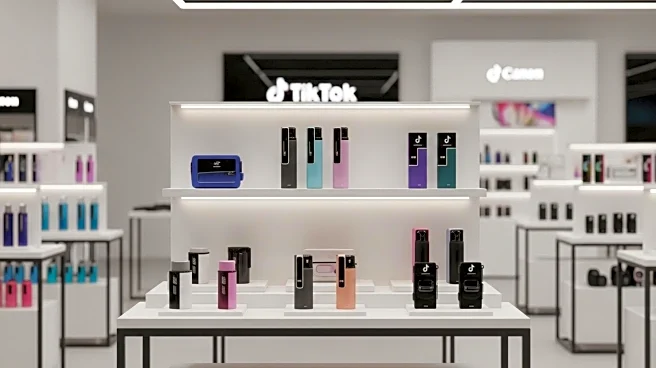What's Happening?
Search advertising is increasingly shifting from traditional search engines to social and video platforms, now accounting for nearly a quarter of all media budgets. According to data from WARC Media and TikTok, global search advertising spend is projected to reach $248.6 billion this year, with a forecasted increase to $265.5 billion by 2026. The study highlights that search is a prevalent digital activity, with 72% of U.S. weekly search users engaging in it daily. Notably, Gen Z consumers are leading this shift, with nearly half searching more frequently on social and video platforms compared to AI-assisted search. TikTok has emerged as a significant player, with 86% of Gen Z internet users searching on the platform weekly. The research indicates that search on these platforms is driven by discovery and curiosity, with over one-third of TikTok users inspired to search based on content they see. The study also introduces the MAP framework, advising brands to mix traditional and emerging platforms, align with diverse search intents, and prime for consumer discovery.
Why It's Important?
The expansion of search advertising to social and video platforms represents a significant shift in digital marketing strategies. This trend is particularly impactful for industries such as beauty, fashion, and lifestyle, which benefit from the cultural and community-driven aspects of these platforms. The ability to reach consumers at earlier stages of discovery and influence purchase behavior offers brands a full-funnel impact, unlike traditional search engines. This shift also highlights the changing preferences of younger consumers, who prioritize platforms offering better in-app discovery and are influenced by creators and influencers. As search behavior evolves, marketers must adapt their strategies to leverage the strengths of both traditional and emerging platforms, ensuring they meet the dynamic expectations of modern consumers.
What's Next?
Brands and marketers are expected to increasingly integrate social and video platforms into their search advertising strategies, balancing them with traditional search engines. The MAP framework suggests that marketers should focus on creating agile and flexible strategies that align with diverse consumer search habits. As the search landscape continues to evolve, businesses will need to capitalize on the discovery opportunities these platforms offer, potentially leading to increased competition and innovation in digital marketing. The ongoing shift may also prompt traditional search engines to enhance their features to retain user engagement.
Beyond the Headlines
The shift towards social and video platforms for search highlights broader cultural and behavioral changes in how consumers seek information and make purchasing decisions. The influence of creators and influencers on these platforms underscores the importance of authenticity and relatability in marketing. This trend may also raise questions about data privacy and the ethical use of consumer information, as platforms leverage user data to personalize search experiences. Additionally, the growing role of these platforms in search could lead to regulatory scrutiny and discussions about fair competition in the digital advertising space.












